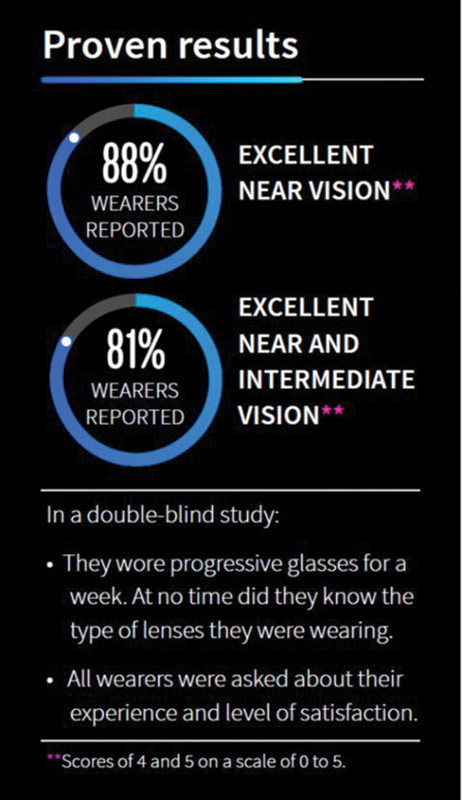Sponsored by IOT
By Deborah Kotob, ABOM
“The proof of the pudding is in the tasting” is an adage meaning that to determine success, put it to the test. While a lens design is impressive in theory, it must be put to the test with actual wearers with real-life use to be validated. Wearers judge lens performance based on personal comfort, not just acuity. Today’s screen-focused consumer has new vision needs and higher demands for comfort in their new work from home (WFH) environment. While other digital and web-based technologies rapidly adapt to our new reality, increasing our WFH comfort and productivity, so has lens technology.

This article introduces the new Camber lenses with Steady Plus Methodology from IOT. This new technology is now inherent in all Camber lenses. We work unprecedented hours staring at screens of all sizes for many working distances and both dynamic and stationary vision. Understanding this as the modern vision challenge, the optical engineers at IOT developed Steady Plus Methodology technology, giving the Camber lens wearer broad stable fields of view and the ability to switch viewing distances instantly. Note the word steady in the name; it refers to stabilizing vision by virtually eliminating the swim effect as we switch from viewing screens while on the move to the easy transitioning from distance to intermediate and near.
I confess I find it difficult to maintain journalistic neutrality on the Camber lens. Why? Because I’m influenced by my husband and his friend, both of whom swear that of all the progressives they’ve worn, Camber lenses are the only ones they loved the moment they put them on. The latter of the two was a hardcore PAL hater. While the testimonial of two guys isn’t a wearer trial, being witness to the experience of these two individuals reinforces the influence that happy consumers have on those around them. It also shows the importance of proving that lens designs work in the real world through the eyes of real people. From our optician perspective, this is the reaction we look for in PAL wearers, instant adaptation and a “WOW, these are so comfortable!”

The Camber lens is already ranked one of the most technologically advanced progressive lens designs available, so how does one improve upon it? The Camber lens with Steady Plus Methodology results from newly discovered methodologies that surpass the mathematical limitations of old methods. Past efforts to reduce the swim effect in progressive lenses focused on the reduction and precise placement of unwanted cylinder error in the lateral areas of the lens. However, unwanted mean power plays a significant role in the perception of the swim effect and overall wearer satisfaction. Furthermore, mean power error can drastically increase blur and reduce near vision. Steady Plus Methodology adds a substantial improvement in the wearer’s binocular vision performance, providing a smoother visual experience as both eyes perceive equal powers in space and time for each gaze direction.
Binocular balance improvement: Steady Plus Methodology precisely balances and smoothly distributes the mean power in the intermediate and near zones of the lens for best binocularity. Both eyes in the intermediate and near areas of the lens perceive the same power simultaneously.
But how does the technology benefit the patient? First, the patient will experience the virtual elimination of the swim effect and decreased peripheral blur. Alternatively, they will have vastly improved intermediate and near vision, all for a more comfortable visual experience, even when they are staring at their mobile phone while on the move or spending an average of 13 hours a day staring at various screens.
The fine-tuning of free-form lens design is an ongoing proposition for all lens manufacturers. New methods and technologies continue to advance lens performance. But in marketing, it’s known that you don’t create a product and hand it to the consumer, and say this is what you need. Instead, you must understand the current state of consumer vision needs in the digital age where we work, learn and socialize in the comfort of our home. After all, we couldn’t WFH without Zoom, email, smart devices, the cloud, and all other digital and web-based technologies that allow us to carry our online office with us and stay connected from the comfort of our home; so should our eyewear.













